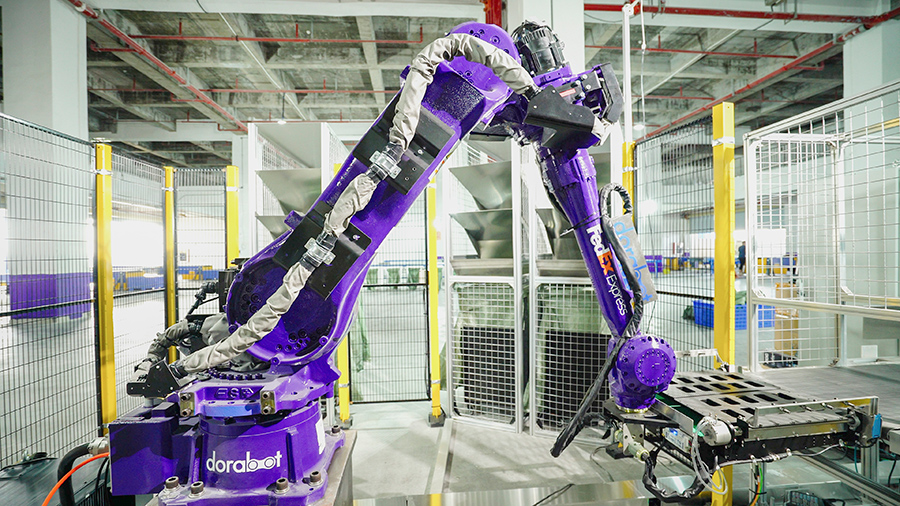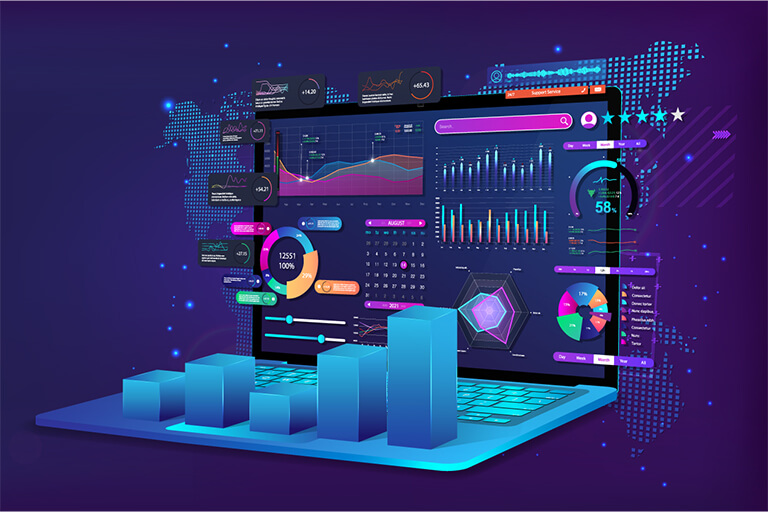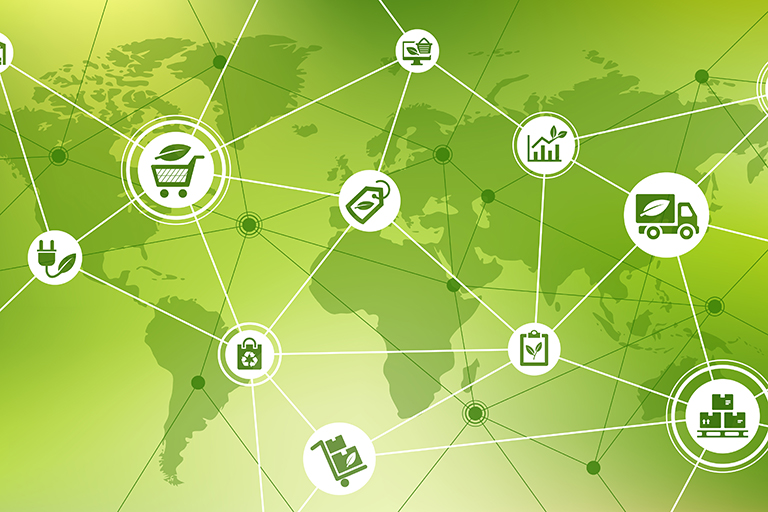Top 3 Logistics Trends To Watch: Data and Digitization
Logistics providers are turning into tech drivers, with the increased use of AI and big data in managing supply chains. Staying ahead is all about prioritizing digitization and putting trusted data to work.
Generative artificial intelligence is here – and the world is taking notice. ‘’GenAI’’ is garnering plenty of global attention for its ability to power chatbots and write everything from emails to essays.
When it comes to transforming supply chains, the biggest priority for most businesses remains digital. From progressing digitization and championing quality data, there can be a deep disconnect between digital and physical networks.
How the supply chain industry has evolved
Historically, supply chains were all about the physical – the planes, trains, trucks, and sea freighters that made global commerce happen, in tandem with “hard” infrastructure such as cities, ground hubs, and ports.
But the way we ship, transport, and deliver globally has fundamentally changed.
As e-commerce has grown, supply chains have transformed with every shipment having a digital layer. The availability and quality of data within the global supply chain isn’t just increasing exponentially. It’s also being made useful with machine learning and trained with artificial intelligence.
When it comes to transforming supply chains, the biggest priority for most businesses remains digital. From progressing digitization and championing quality data, there can be a deep disconnect between digital and physical networks.
How the supply chain industry has evolved
Historically, supply chains were all about the physical – the planes, trains, trucks, and sea freighters that made global commerce happen, in tandem with “hard” infrastructure such as cities, ground hubs, and ports.
But the way we ship, transport, and deliver globally has fundamentally changed.
As e-commerce has grown, supply chains have transformed with every shipment having a digital layer. The availability and quality of data within the global supply chain isn’t just increasing exponentially. It’s also being made useful with machine learning and trained with artificial intelligence.

Top trends in smart logistics
The true value of AI rests in data. It can drive simplification and digitization, and in turn, strengthen risk management or growth. And with Gartner research showing that the main obstacle holding back supply chain transformation is quality data, it’s imperative that all businesses look to reliable data as a valuable asset.
Take FedEx as an example. We have been harnessing the power of data for years to develop deep knowledge about our business. This allows us to track shipments, optimize deliveries, enhance customer experience, and deliver tangible supply chain solutions with real impact.
As we take the next step on our own digital innovation journey, we see three trends to watch as data keeps transforming the supply chain:
1. Location Intelligence
Location intelligence has changed how retail, logistics and other industries work by combining the digital and physical. However, it remains a largely untapped asset for many industries.
The ability to map, visualize and transform how decisions are made in delivery and route planning is unlocking value. Simple data visualization on maps is being replaced with data that’s geospatially layered, integrated, and analyzed.
End-to-end integration of this data across both digital and physical networks is critical. So too is the integration of customer or internal data with that of logistics networks.
The true value of AI rests in data. It can drive simplification and digitization, and in turn, strengthen risk management or growth. And with Gartner research showing that the main obstacle holding back supply chain transformation is quality data, it’s imperative that all businesses look to reliable data as a valuable asset.
Take FedEx as an example. We have been harnessing the power of data for years to develop deep knowledge about our business. This allows us to track shipments, optimize deliveries, enhance customer experience, and deliver tangible supply chain solutions with real impact.
As we take the next step on our own digital innovation journey, we see three trends to watch as data keeps transforming the supply chain:
1. Location Intelligence
Location intelligence has changed how retail, logistics and other industries work by combining the digital and physical. However, it remains a largely untapped asset for many industries.
The ability to map, visualize and transform how decisions are made in delivery and route planning is unlocking value. Simple data visualization on maps is being replaced with data that’s geospatially layered, integrated, and analyzed.
End-to-end integration of this data across both digital and physical networks is critical. So too is the integration of customer or internal data with that of logistics networks.

For example, we are currently using next-level route planning technology at FedEx. Created by our DataWorks team, this location intelligence “geocodes” pick-up and delivery locations using advanced statistical algorithms. We then layer multiple data points onto digital maps, creating optimal delivery routes that undergo real-time improvements.
2. Know your shipment
Knowing your shipment is being completely reimagined. This isn’t just location or spatial-based information. It’s ‘intelligence’ that traverses many different layers - from big data and analytics to the anywhere-anytime access of the cloud, to more cohesive management of shipment details.
This will deliver even greater impact in the future. Digital control towers with an end-to-end view of the supply chain will be the norm, allowing people to access data when and where they need it.
At FedEx, one such smart tool giving deep knowledge about deliveries is “Thea”, providing greater visibility into shipments. The tool saves time, narrows down issues, and enables us to intervene early, ensuring speedy resolution.
Another is our Estimated Time Delivery Window (ETDW), which combines big data with machine learning to create enhanced tracking – with greater accuracy of estimated delivery times and updates for early or delayed shipments.
RELATED: How To Ship A Package With FedEx
3. The rise of ‘elastic’ logistics
Elastic logistics is the ability to flex schedules, capacity, and route optimization in line with volatile markets. Being able to easily expand or shrink supply chains brings greater flexibility in shipping, manufacturing, and transportation. It transforms operations and ensures close alignment with strategy and risk management.
We have long seen the benefit of adaptive, flexible logistics. Now, it’s rising to a completely new level through clever use of data and predictive analytics - connecting siloed processes, improving resource utilization, and reducing operational costs.
2. Know your shipment
Knowing your shipment is being completely reimagined. This isn’t just location or spatial-based information. It’s ‘intelligence’ that traverses many different layers - from big data and analytics to the anywhere-anytime access of the cloud, to more cohesive management of shipment details.
This will deliver even greater impact in the future. Digital control towers with an end-to-end view of the supply chain will be the norm, allowing people to access data when and where they need it.
At FedEx, one such smart tool giving deep knowledge about deliveries is “Thea”, providing greater visibility into shipments. The tool saves time, narrows down issues, and enables us to intervene early, ensuring speedy resolution.
Another is our Estimated Time Delivery Window (ETDW), which combines big data with machine learning to create enhanced tracking – with greater accuracy of estimated delivery times and updates for early or delayed shipments.
RELATED: How To Ship A Package With FedEx
3. The rise of ‘elastic’ logistics
Elastic logistics is the ability to flex schedules, capacity, and route optimization in line with volatile markets. Being able to easily expand or shrink supply chains brings greater flexibility in shipping, manufacturing, and transportation. It transforms operations and ensures close alignment with strategy and risk management.
We have long seen the benefit of adaptive, flexible logistics. Now, it’s rising to a completely new level through clever use of data and predictive analytics - connecting siloed processes, improving resource utilization, and reducing operational costs.

For instance, we are using AI for demand forecasting platforms to improve capacity planning. We are also using more robotic process automation (RPA) in our facilities to give us greater ‘elasticity’ to meet demand.
In Singapore, we recently launched a robotic sorting arm at our regional hub to optimize operational processes – sorting up to 1,000 packages per hour and covering up to 100 destinations simultaneously.
What’s ahead for next-generation supply chains?
Looking ahead, we’ll see:
And for businesses like ours, integrity of data and the AI that drives it will be even more essential. Ultimately, it helps us improve customer service and remain competitive amidst a rapidly changing economic landscape.
Ready to ship with FedEx? Open an account now.
In Singapore, we recently launched a robotic sorting arm at our regional hub to optimize operational processes – sorting up to 1,000 packages per hour and covering up to 100 destinations simultaneously.
What’s ahead for next-generation supply chains?
Looking ahead, we’ll see:
- Data helping boost business resilience and efficiency
- Strengthened risk management for supply chains
- Better-informed decision-making capabilities – not just in supply chains but across entire organizations – in support of growth, and the seamless movement of goods and services across borders
- Business strategies firmly backed by data and AI
- Deep knowledge AI tools like chatbots pioneer new roles and processes in customer support
And for businesses like ours, integrity of data and the AI that drives it will be even more essential. Ultimately, it helps us improve customer service and remain competitive amidst a rapidly changing economic landscape.
Ready to ship with FedEx? Open an account now.
***




















 The Latest
The Latest